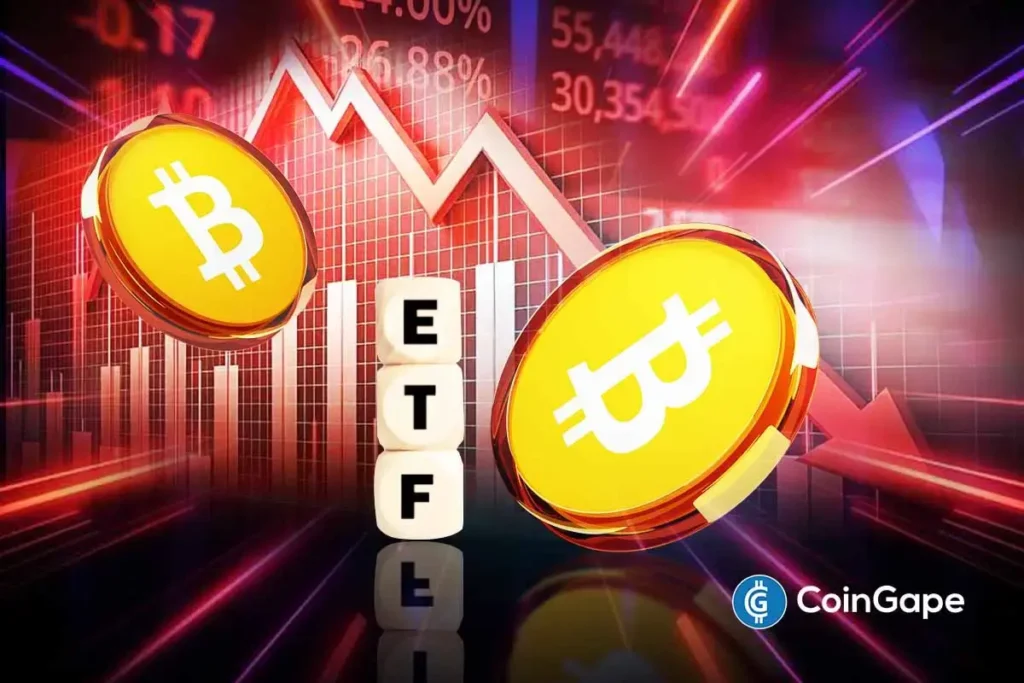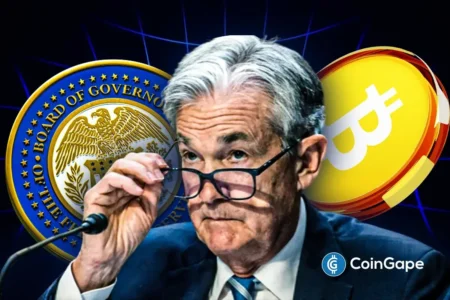Bitcoin ETFs Face Historic Outflows Amid Market Downturn
Bitcoin exchange-traded funds (ETFs) are experiencing their second-largest outflows on record, as the cryptocurrency market continues to face significant challenges despite underlying bullish fundamentals. Recent trends indicate a worrying climate for institutional investors, pushing Bitcoin’s price below $96,000 amidst a backdrop of overall market sentiment that favors caution.
Significant Withdrawals Signal Institutional Hesitation
On a dramatic trading day, net outflows from U.S. spot Bitcoin ETFs reached an astonishing $869.9 million, marking one of the most substantial withdrawal events since the inception of these financial products. This surge in outflows underscores a growing wariness among institutional investors regarding Bitcoin’s instability. Notably, Grayscale’s Bitcoin Mini Trust experienced the largest single outflow, losing $318.2 million. Other significant withdrawals came from BlackRock’s IBIT, which faced a loss of $256.6 million, while Fidelity’s FBTC saw $119.9 million exit its funds. The overall net loss is compounded by additional contributions from funds managed by Bitwise, VanEck, and Grayscale, revealing a broader trend of hesitance in the market.
Historical Context of ETF Withdrawals
The recent outflows are not unprecedented; they follow a historical peak recorded on February 25, 2025, when Bitcoin ETFs collectively saw $1.14 billion leave in just one trading day. Comparison with earlier events illustrates the volatility and responsiveness of investor sentiment within the cryptocurrency landscape. Just a few days prior to the latest round of significant withdrawals, Bitcoin ETFs endured outflows of $558.4 million, indicating that this trend of retreating capital is not merely a one-time occurrence but part of an ongoing trend, often triggered by financial turbulence signals in the broader economy.
Market Dynamics: Bitcoin’s Price Struggles
As institutions pull back, Bitcoin’s value reflects this sentiment, having dropped to approximately $95,931 before recovering slightly to around $97,000, marking a substantial 14% decline over the past month. Although some had hoped that the U.S. government’s recent reopening would provide a lift to the market—following President Trump’s signing of a temporary funding bill—the anticipated boost in confidence has failed to materialize.
ETF Trends: Ether and Broader Impact
The Ethereum ETF market has also been impacted, logging $259.72 million in outflows, showcasing a broader trend of investor pullback in crypto assets. Analyst Checkmate indicated that nearly 57% of dollar-denominated Bitcoin ETFs are currently underwater at the $100,000 mark, suggesting many traders are prioritizing newer acquisitions over legacy holdings. This behavior hints at a cautious investor approach, as they look to optimize their portfolios amid declining market conditions.
Economic Indicators and Market Sentiment
Market sentiments are further dampened by ongoing speculation regarding the Federal Reserve’s monetary policy. As expectations for a potential 25 basis point rate cut deteriorate, many traders are recalibrating their assumptions about the future of monetary easing, perpetuating an atmosphere of uncertainty within the cryptocurrency market. Unfavorable economic indicators tend to exacerbate market declines, keeping Bitcoin and other digital assets in a downward spiral as investor confidence dwindles.
Conclusion: The Future of Bitcoin ETFs
In summary, the recent bearish trend observed in Bitcoin ETFs highlights the fragility of market confidence in an evolving economic landscape. As outflows mount and institutional investors adopt a risk-averse strategy, it’s crucial for market participants to evaluate their positions and strategies carefully. While the long-term structural demand for Bitcoin remains intact, current conditions necessitate a more cautious approach, hinging on external economic factors influencing investor behavior and market dynamics. Companies and investors alike must navigate these turbulent waters, keeping a close eye on macroeconomic indicators and market trends to make informed decisions as the cryptocurrency landscape continues to transform.
















